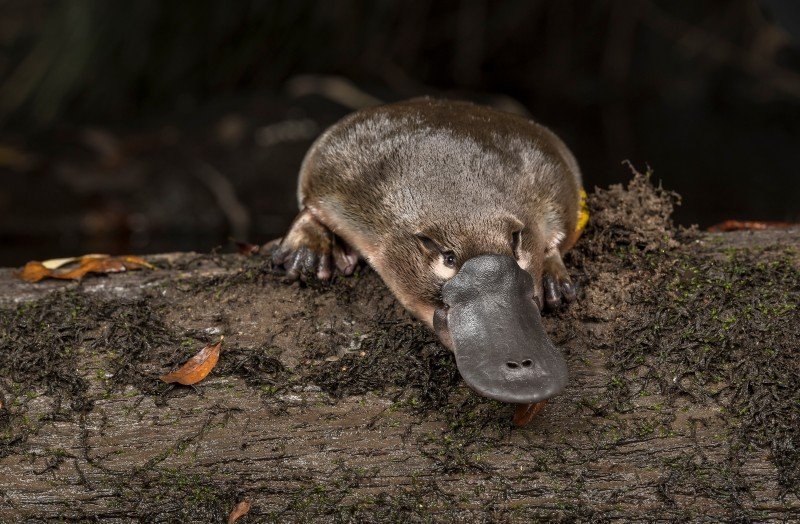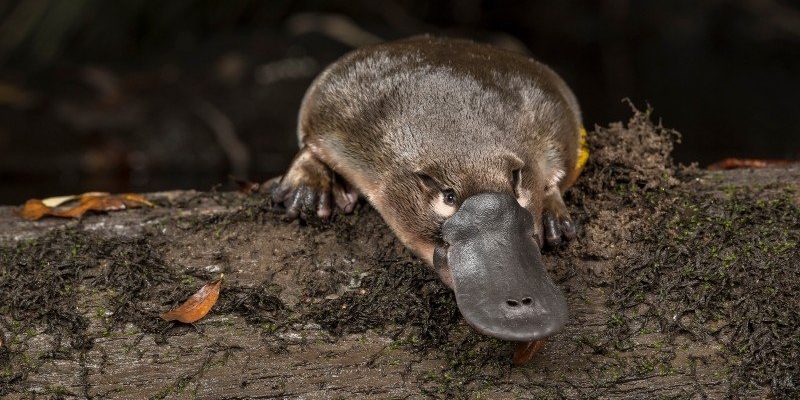
Just like how we keep an eye on the health of a forest or the clarity of a river, the platypus serves as an indicator of Australia’s ecological well-being. This little animal is more than just a curiosity; it’s a crucial part of the ecosystem. In this article, we’ll dive deeper into the platypus’s conservation status, the challenges it faces, and why protecting this unique species matters. So, grab your favorite coffee, and let’s take a closer look!
What Makes the Platypus Unique?
The platypus is a marvel of evolution; it’s a monotreme, which means it lays eggs—a rare trait among mammals. Imagine combining a beaver, a duck, and an otter. That’s basically what the platypus looks like! With its sleek body, flat tail, and webbed feet, this animal is perfectly adapted to its aquatic lifestyle. Its bill contains electroreceptors, allowing it to detect prey underwater, making it a skilled hunter of insects and small crustaceans.
Moreover, platypuses produce milk to nourish their young, but they do so in a remarkable way. They don’t have nipples; instead, the milk seeps through openings in their skin onto their fur, where the babies lap it up. How cool is that? This unique reproductive strategy, combined with their distinctive physical characteristics, makes the platypus an incredible example of nature’s creativity.
But this one-of-a-kind creature is facing challenges that threaten its survival. Understanding these challenges is vital to grasping the urgency of platypus conservation.
Current Conservation Status
As of now, the platypus is listed as near threatened by the International Union for Conservation of Nature (IUCN). This means that while it’s not currently facing imminent extinction, it is at risk of becoming endangered in the future. The platypus’s population has been declining due to various factors, and the decline raises alarm bells for conservationists.
The biggest threats to platypus populations include habitat destruction, pollution, and climate change. Urban development and agricultural practices often lead to the destruction of wetlands and riverbanks, which are vital for platypus survival. As these natural habitats dwindle, so does the food supply and breeding ground for these fascinating animals.
But it’s not just about losing homes. Water quality is another pressing issue. Pollution from agricultural runoff and urban waste can contaminate waterways where platypuses live. Additionally, climate change is causing shifts in weather patterns and water availability, which can further stress these animals.
Habitat Destruction and Its Impact
Habitat destruction is the key culprit affecting platypus populations. As humans expand cities and convert natural land for farming, wetlands and rivers, which are crucial for the platypus, are being lost. Imagine living in a beautiful mansion, only to watch it slowly crumble around you. That’s what’s happening to the platypus’s home.
Wetlands are particularly important for the platypus. They provide food, nesting sites, and safe environments for raising young. Without these habitats, the platypus struggles to find what it needs to thrive. It’s like trying to find a restaurant in a city that’s been bulldozed—options become limited, and survival becomes a daily challenge.
Conservation efforts are vital to combat this issue. Protecting existing habitats through legislation and creating new protected areas can help safeguard the platypus’s future. Community involvement can also make a big difference, as local initiatives often lead to positive environmental changes.
The Role of Climate Change
Climate change is an ever-looming threat to many species, and the platypus is no exception. Rising temperatures, altered rainfall patterns, and prolonged droughts can significantly impact their habitats. It’s like trying to run a marathon in increasingly hot weather—it becomes harder to keep going.
For platypuses, reduced water levels can lead to habitat shrinkage. When rivers and streams become too shallow, it not only affects their ability to hunt but also reduces their nesting sites. As a result, fewer platypuses may survive to adulthood. Plus, changing temperatures can impact the availability of food sources. Less rain may mean fewer insects, which are a primary food source for the platypus.
To help combat these challenges, conservationists advocate for measures to address climate change. This includes reducing carbon emissions, protecting wetlands, and promoting sustainable practices in agriculture.
Conservation Efforts and Community Involvement
Luckily, there are many efforts underway to protect the platypus and its habitat. Various organizations are working tirelessly to raise awareness and implement meaningful conservation strategies. They often conduct research to monitor platypus populations and assess the health of their habitats.
Many communities are also taking action. Local groups organize clean-up days to remove pollution from waterways, while schools might engage students in projects that raise awareness about the platypus’s plight. This grassroots involvement is crucial, as community-led initiatives can lead to significant changes.
You might even consider volunteering or participating in local conservation programs! Every little bit helps, and getting involved can be an enriching experience. Plus, you’ll be helping to protect a truly unique part of our wildlife.
Why Platypus Conservation Matters
You might be wondering why we should care about saving the platypus. Beyond its uniqueness, the platypus plays a vital role in the ecosystem. As a predator, it helps maintain the balance of its habitat by controlling insect populations and promoting biodiversity.
Additionally, the platypus serves as an indicator species, which means that its health reflects the overall condition of its environment. If the platypus is struggling, it’s a warning sign that something isn’t right in the ecosystem, prompting further investigation into environmental health.
When we protect the platypus, we’re not just saving one species; we’re investing in the health of our environment as a whole. It’s a chain reaction—healthy ecosystems lead to healthier communities and a healthier planet.
So, is the platypus endangered? While it’s not currently facing immediate extinction, it’s clear that its future hangs in the balance. Threats from habitat destruction, climate change, and pollution are real and pressing.
However, there’s hope. Conservation efforts and community involvement can make a difference. By advocating for the platypus and contributing to its protection, we can all play a part in ensuring this extraordinary creature continues to thrive. The next time you think of the platypus, remember it’s not just a quirky animal; it’s a key player in our ecosystem, and saving it benefits us all. Let’s keep the conversation going and act before it’s too late!

